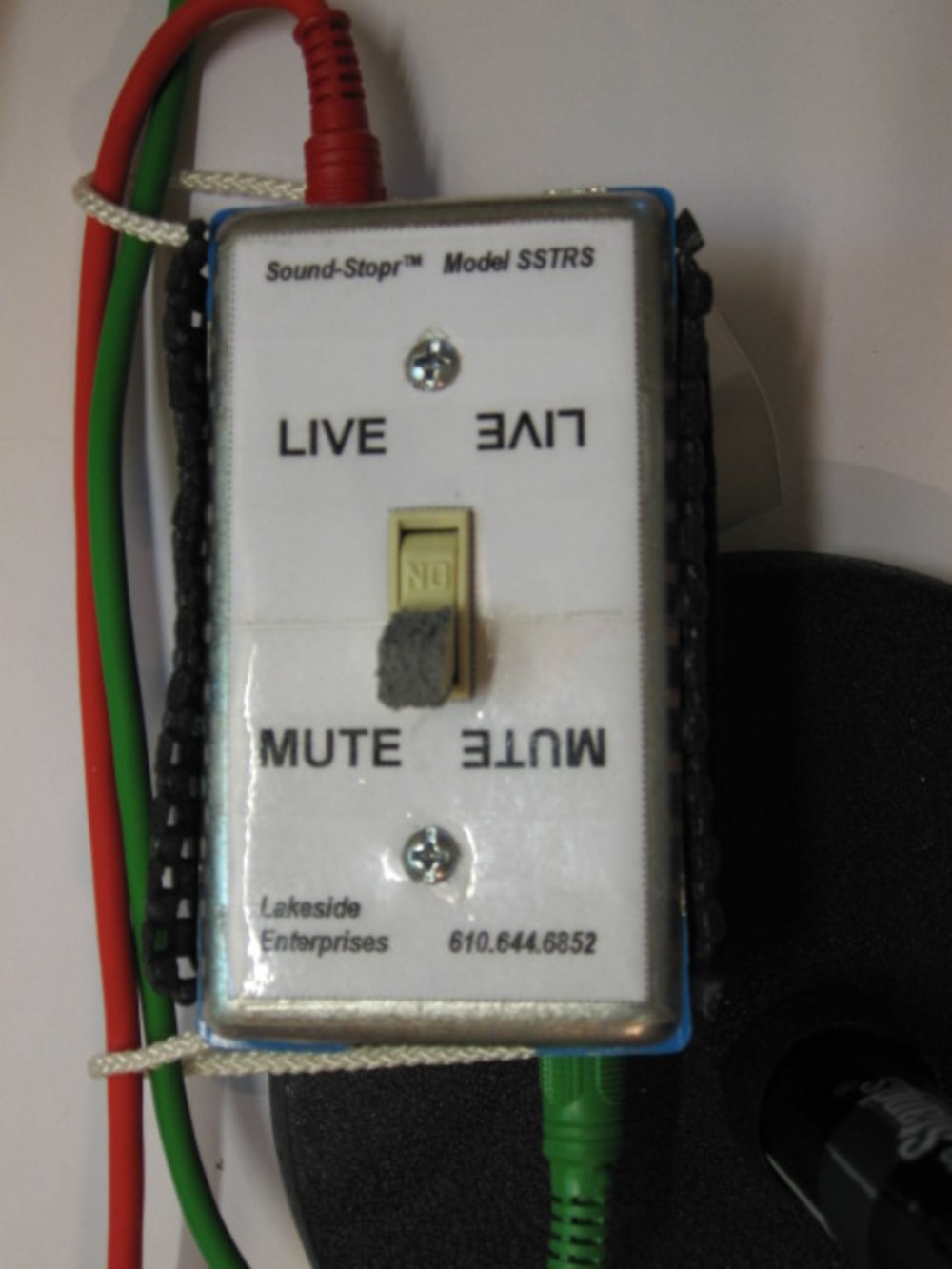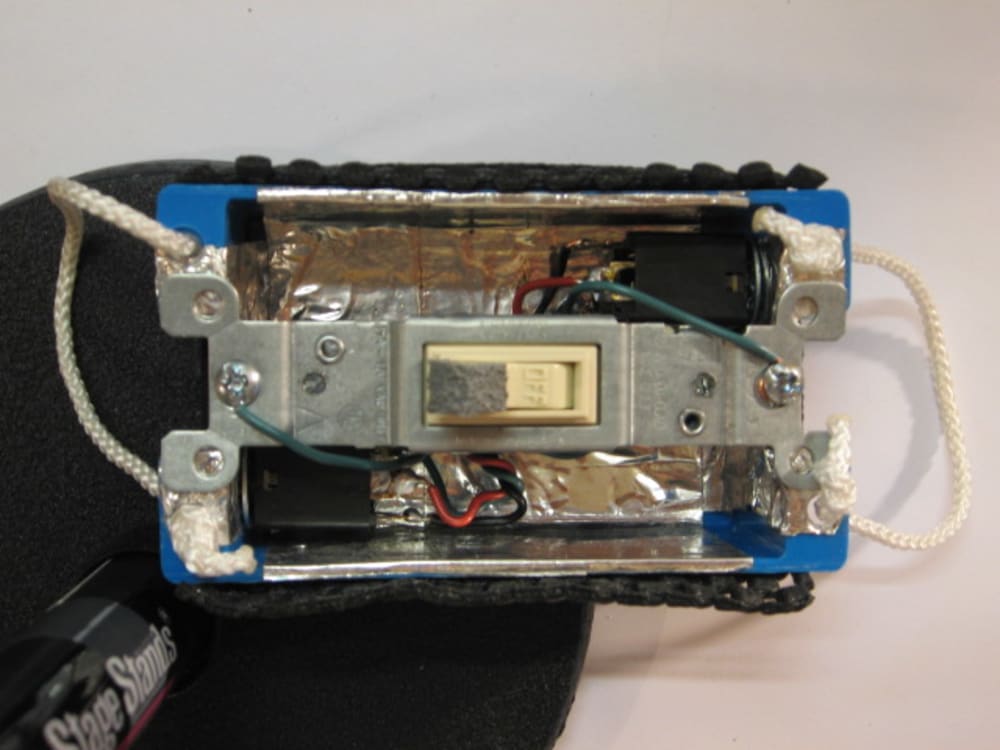Current implementations of MICROPHONE mute switches use either a momentary or a maintained connection push-button foot switch, an in-line shorting switch at or in the microphone connector, or a switch within the microphone body itself.
Current implementations of INSTRUMENT mute switches use either an A-B type maintained connection push-button foot switch, or a shorting switch built into the instrument connecting cord, at the plug end of the cord inserted into the instrument.
Problems:
All of these devices have some disadvantages.
e.g.,
No indication of, or difficult to view, switch status;
necessity of holding down switch, if momentary type;
may need a "free hand" to operate;
battery or external power suppy needed if LEDs used to indicate switch position;
proprietary design switches (difficult or impossible to replace), or switches not readily available, or expensive;
unsoldering/soldering required to replace switch.
Solution:
A passive design shorting switch, using a readily available SPST TOGGLE switch with screw terminals,
in a utility box, that can be foot or hand operated,
and mountable in many locations.
Advantages:
- No power required; passive shorting switch;
no noise or sound coloration).
- For instrument signal: shorts Tip to Ring/Sleeve-Ground.
- Toggle switch position gives positive indication of
switch status.
- Use of TRS (Tip, Ring, Sleeve; "Stereo") 1/4" jacks allows use with standard instrument (guitar) cable, OR
by using a TRS plug to XLR Female, and a TRS plug to XLR Male cable, can be used with a microphone as a microphone muting switch; shorts Tip to Ring (corresponding to pins 2 & 3 of XLR connector).
- For instrument use, can be positioned AFTER an in-line digital tuner, for quick muting and silent tuning while on stage.
Features and design implementation:
1. Tough thermoplastic 4.25" x 2.5" x 1.25" utility box;
(Durability test: Stood on with one foot, 150lbs weight,
no damage).
2. Steel utility box cover plate for toggle switch.
3. 1/4" TRS jacks for versatility (narrow-end mounted).
4. Toggle switch (SPST) readily available
at home improvement or hardware store;
"field replaceable"/no soldering required,
only need a screwdriver; $1 item.
Durability test:
Also stood on switch itself with one foot,
150lbs weight, no damage).
5. Internal adhesive-backed foil shielding on inside of box.
6. Rubber/Vinyl non-slip cover on tip of toggle switch.
7. 2 attached cord management loops (1/8" Poly-rope cord);
prevents cords from being dislodged;
also allows for hanging box on mic or keyboard stand.
8. Velcro hook tape strips on bottom of case
(for use on loop style carpet, or with Pedal boards).
9. Removable non-slip material around bottom and sides
of box, secured with cloth covered elastic band;
for use on any surface; easily replaceable items.
10. Top cover label.
11. Optional 3rd and 4th TRS jacks, with ground lift
capability (internal screw-connected jumper wire)
(for Y or X connection functionality;
e.g., signal to 2 amplifiers,
passive microphone split to second mixer).
Target selling prices:
With 2 TRS Jacks: $30
With 3 TRS Jacks: $40
With 4 TRS Jacks: $50
Like this entry?
-
About the Entrant
- Name:David Mikowychok
- Type of entry:individual
- Hardware used for this entry:Asus Eee PC 901 NetbookSoftware used for this entry:Microsoft Publisher
- Patent status:none








